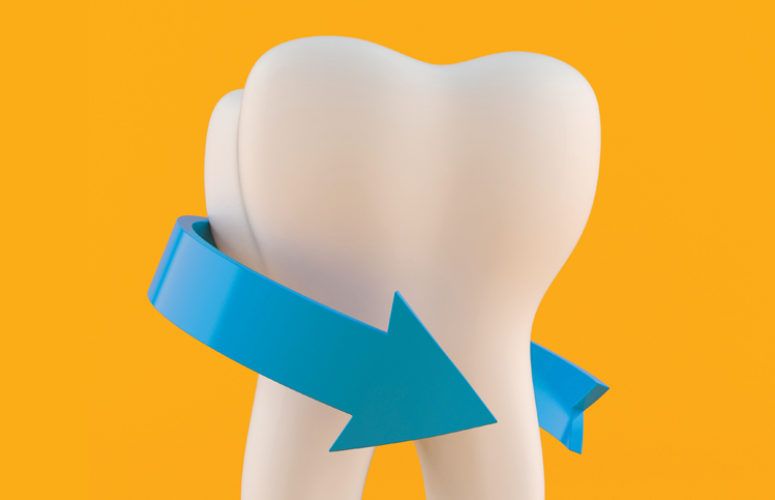
Don’t Overlook the Importance of Offering Dental Benefits
Providing dental coverage options to employees can be very beneficial to your business.
By Jim Pytell, Assistant Editor On Jul 14, 2018A robust benefits package is one of the best ways for an employer to attract and retain top talent at his or her company. In a world where the cost of health insurance continues to rise, it is imperative that businesses offer employees choice when it comes to the types of coverage available to them.
“The No. 1 item that people consider today when taking a new job or deciding to stay at a job, aside from their salaries, tends to be what their benefits packages are,” says Jared Ferguson, Horizon Blue Cross Blue Shield of New Jersey’s director of specialty products and services. “Fifty years ago, benefits packages were nice to have, but today they are essential in the way that we deliver care in the United States.”
When it comes to the products within a benefits package, Ferguson says that dental is the No. 1 product that employees like to see, more so than vision and even general medical coverage.
“[Dental] is something that almost every employee uses on an annual basis,” he adds. “Around 60 to 70 percent of an employer’s population isn’t using its benefits other than for a wellness exam. Dental (and vision), on the other hand, are used almost across the board.”
Oral Health Supports Overall Health
Steve Fleischer, chief sales officer and vice president of sales and account management at Delta Dental of New Jersey, Inc., says that oral health is an important component of good overall health and wellness. He goes on to say that a routine dental exam can go as far as to help to identify undiagnosed medical conditions.
Fred Scardellette, vice president of dental and vision business operations for Cigna, concurs, stating that numerous studies support a strong association between oral health and overall health. He says that individuals with dental coverage are more likely to regularly visit the dentist than those without, meaning that they may catch a potentially serious medical condition that they otherwise would not have, had they not went to the dentist.
“A Cigna consumer survey found that oral health can decline quickly with age for people who miss regular checkups,” Scardellette says. “The survey found that 63 percent of people ages 26 to 34 who visit the dentist no more than once a year say their oral health is very good or excellent. This falls to 55 percent for people ages 35 to 44 who see the dentist no more than once a year, and drops to 33 percent for those 45 to 54.”
He continues, “Research also shows that good dental health is associated with improved management of several medical conditions. For example, analysis of Cigna claims data finds an association between untreated periodontal disease and higher medical costs among people with diabetes, heart disease and stroke.
“Employers should ask insurers about strategies for increasing customer engagement in oral health prevention and wellness. It is important that we make it easy for individuals to find and visit a dentist on a regular basis – the longer the wait between dental visits, the more likely a problem will develop and grow more complicated to treat.”
While there has been an increased focus for employers to provide their employees with healthy lifestyle choices at the workplace – such as open workspaces, flex scheduling, remote access and gym memberships – providing dental benefits can go a long way in ensuring an employer’s population stays on top of their overall health, thus preventing medical conditions that may cause them to miss work for an extended period of time.
What to Look for When Shopping for Coverage
“While employers obviously look at price, it is important to also look at how a dental benefit plan can provide cost savings – through benefit and network choices that meet consumer needs, thereby achieving a high percentage of plan participants using services in-network,” Scardellette says.
For example, Fleischer says that on average, 85-90 percent of services that Delta Dental’s members have performed are done by in-network dentists, and the services that occur outside the network are still reimbursable for most plans.
He recommends that employers do their homework on their employees, and seek out the specificities of what they may need.
“If there are companies with employees that have dependent children, orthodontics may be a benefit they would want to include,” Fleischer says. “Businesses should work with their insurance broker to identify what their needs are and then look to incorporate these benefits into the plan they purchase.”
Additionally, Rodney Kuntz, specialty head of sales at Aetna, says that digital transparency tools are becoming increasingly popular among insurance providers.
He states that some questions to consider when shopping for coverage include: Does the carrier provide access to patient reviews and quality information? Can members schedule appointments online, get appointment reminders, or offer feedback via simple online reviews? Does the carrier offer easy-to-understand presentation of benefit information (e.g., calling something a filling instead of a restoration)? And, does the carrier have accessible service teams comprised of dental experts?
“We use clinical expertise to develop our plans, which are overseen and re-evaluated by dentists. We work with employers to create plan design options that let them choose the right balance between provider choice, benefit levels and price,” Kuntz says. “Because dental plans typically have maximum dollar caps, we work to create provider networks that give the best discounts possible so that members can maximize their benefits.”
“We’ve found that having online dental transparency tools for our customers is significantly increasing their use of in-network dental services,” Scardellette adds. “Increasing the use of in-network services provides more cost savings for both employees and their employers.”
Ferguson sums it up by saying that the driving factors employers should be looking for when considering a dental benefits plan are choice and transparency of information.
Technology Continues to Evolve the Industry
When it comes to shopping for coverage, Ferguson says, “Historically, larger businesses are most often looking for the greatest flexibility, [whereas] smaller businesses have traditionally been more cost sensitive – but that is changing. The expectation of small businesses is that, through technology, we as insurers will become more flexible down market to smaller and smaller customers.
“I look at technology and the internet as significant opportunities for us to improve not just the level of care we are offering through dental plans, but also the extent to which we can connect patients with providers,” he continues. “[It presents an opportunity] to connect different sets of providers together, so we can give a better overall experience to members.”
Fleischer says that technology will continue to have a big impact on the industry, and has specifically made the communication between a health plan and its members more efficient.
“[Delta Dental] now offers members a mobile app, which puts information at [members] fingertips, making it easier to receive proper oral care and improve dental health and wellness,” Fleischer says. “Our mobile app also provides access to oral health resources including educational videos, a cost estimator and a digital ID card.”
Scardellette says that a popular web-based tool Cigna uses is its dental treatment cost estimator.
“[The tool] allows customers enrolled in a Cigna dental plan to easily estimate and plan for their dental care costs – on both a procedure-code and treatment level,” he explains. “Other tools include dental office comparisons based on affordability, patient experience, and professional history. We also offer online appointment scheduling at many offices through the use of Cigna’s digital tools.”
What the Future Holds
As with many industries, adapting to a constantly transforming regulatory landscape is at the forefront for insurers.
“The dental benefits industry will continue to evolve because of changes in regulations, employer benefit contribution strategies, oral healthcare delivery models, economic forces, and emerging technologies,” Scardellette explains. “With these changes come additional opportunities to make a significant difference in the health, well-being and sense of security of those we serve.”
Ferguson points to the Affordable Care Act (ACA) as being the biggest regulatory piece to impact the industry over the last decade or so.
“The ACA impacts dental as pediatric dental care is an essential health benefit and a federal and state exchange product,” Fleischer says. “This increases the potential for children to obtain dental coverage.”
Additionally, Aetna has made it an initiative to do its part in helping to tackle the nation’s opioid epidemic. The company says it is aiming to reduce inappropriate opioid prescribing to members by 50 percent by 2022.
“We’re working to prevent misuse and abuse, intervene when we identify at-risk behavior and support those who are addicted through evidence-based treatments,” Harold L. Paz, M.D., M.S., executive vice president and chief medical officer for Aetna said in a statement.
Overall, the industry is expected to continue growing.
“The number and type of services covered are expanding industry-wide,” Fleischer says. “Most of our plans now cover up to four cleanings for patients with periodontal disease, while orthodontics is also becoming more popular among both adults and children. Employers are also increasingly providing dental services at the worksite. Trends for cost and cost increases have remained relatively stable over the past few years.
“The industry is going to continue to deliver greater value from both a cost and care perspective,” he says.
To access more business news, visit NJB News Now.
Related Articles:





